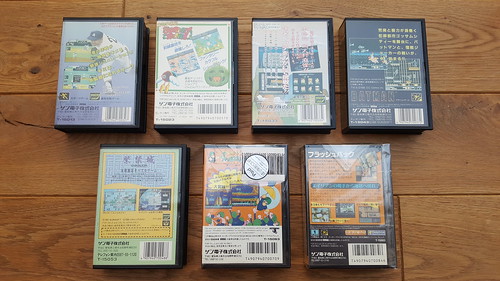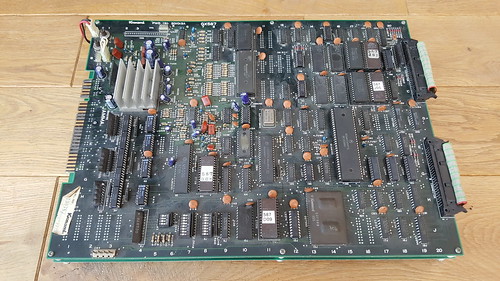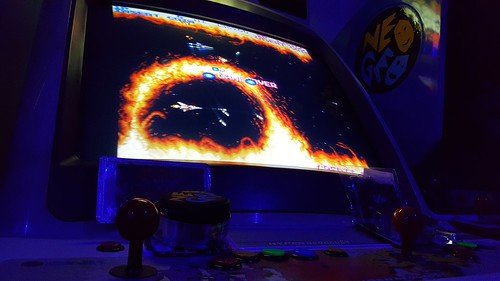
Recently I’ve been getting into the Pal Megadrive and talking about building up my collection. This week my focus turns back to the East, with my Japanese Sunsoft mini case collection. I love these little mini case games, they’re so cool. A total of seven games were released in this format.
Batman
Flashback
Lemmings
Shikinjoh / Shi-Kin-Joh
Super Fantasy Zone
Tel-Tel Mahjong
Tel-Tel Stadium
Lemmings was on my Japan trip wants list back in 2011, and I picked up a copy from Friends in Akihabara. Friends is a great little shop. The selection and prices were fantastic, and the little old lady behind the counter was so helpful and friendly. I also picked up Flashback and Super Star Wars for the Super Famicom, The Ninja Warriors and Popful Mail for the Mega-CD and some video game soundtracks from there.
A trip to Friends back in 2011. I can’t wait for a revisit!
My console gaming pick ups from the trip.
I also picked up Batman, Flashback and Super Fantasy Zone in Japan. I can’t recall where exactly, most likely Super Potato or Trader.
After discovering that seven titles were released in the mini cases, I wanted to track down the remaining titles and complete the collection. I picked up Shi-Kin-Joh, Tel-Tel Mahjong and Tel-Tel Stadium from Genki Video Games, a UK based online import store. This wasn’t as much fun as hunting for them in Japanese game shops, but the service is always excellent. Admittedly these titles aren’t ones I’d usually go for, but they do have some interesting Sega history. These three games utilised the Sega Meganet internet service, using the Sega Mega Modem. Tel-Tel Mahjong and Tel-Tel Stadium were the only two games for the Meganet to feature competitive play. Whilst the Meganet showed great innovation for the time, it proved to be a commercial failure due to the system’s low number of titles, high price and the Megadrive’s lack of success in Japan.













